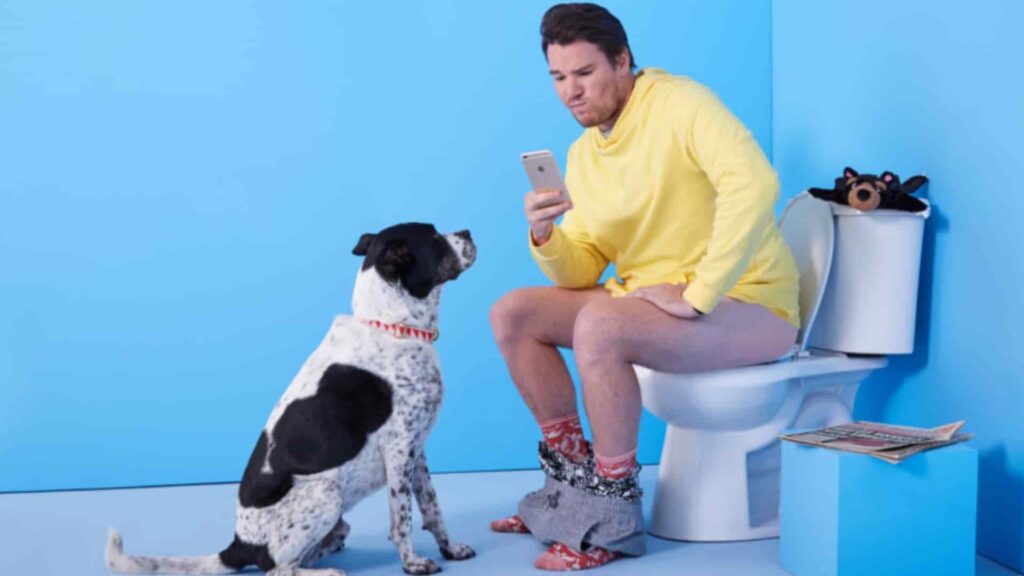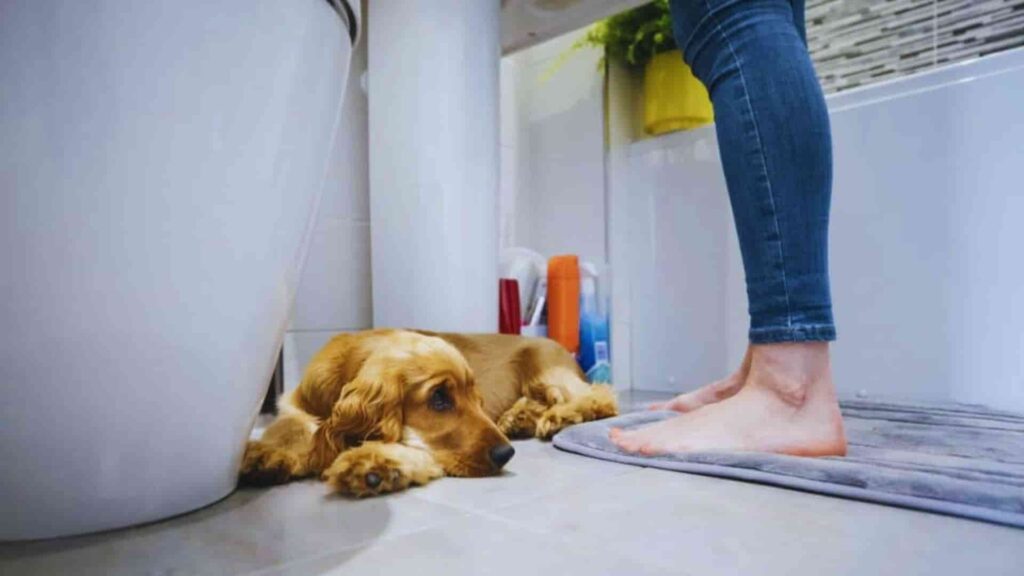Introduction
We’ve all experienced it – that moment of privacy invaded by a curious canine companion who insists on following us into the bathroom. While it might seem odd, this behavior is quite common among dogs and often raises questions about their motivations. In this article, we’ll delve into the intriguing world of our furry friends and uncover the reasons behind this endearing yet perplexing habit.
The Curious Nature of Dogs
Canine Curiosity Unleashed
Dogs are renowned for their inquisitiveness. From their keen sense of smell to their natural instinct to explore their surroundings, they’re hardwired to investigate anything and everything. This curiosity extends to their human companions, making even the most private of spaces, like the bathroom, an irresistible lure.

The Scent Connection
A dog’s sense of smell is nothing short of extraordinary. With over 220 million scent receptors in their noses, compared to our mere 5 million, dogs can detect subtle changes in scents. When you enter the bathroom, you carry a unique blend of odors, and your furry friend can’t resist deciphering this olfactory puzzle.
The Pack Mentality
Instinctual Bonds
Dogs are pack animals by nature, descending from wolves that thrived in tight-knit groups. In a modern context, your home is their pack, and they’re hardwired to stick close to their pack members – that includes you! Following you into the bathroom could be an extension of their instinctual need to be with the pack at all times.
Separation Anxiety
Some dogs are prone to separation anxiety, a condition that triggers distress when left alone. By accompanying you into the bathroom, they’re ensuring they don’t experience any separation anxiety during those brief moments of isolation. It’s their way of seeking comfort and security.

Seeking Attention and Bonding
Undivided Attention
Dogs thrive on human interaction and affection. Following you into the bathroom guarantees a few moments of your undivided attention – whether it’s a pat on the head, a smile, or some playful banter. This interaction reinforces the bond between you and your furry friend.
Strengthening the Human-Canine Bond
Your dog’s desire to be by your side even in the bathroom underscores the deep connection between humans and dogs. It’s a testament to the strong emotional bond you share, and their presence during your private moments serves as a reminder of their unwavering loyalty.
A Dash of Habit and Routine
Creatures of Habit
Dogs thrive on routine and familiarity. If they notice that you frequently head to the bathroom at certain times, they may come to expect it as part of their daily routine. This anticipation might lead them to follow you as a habitual behavior rather than a deliberate intrusion.

Conclusion
In the quirky and heartwarming world of our four-legged companions, following you into the bathroom is a mix of curiosity, companionship, and a dash of routine. This endearing behavior showcases the depth of the bond you share and provides a glimpse into the fascinating instincts and emotions that make dogs such cherished members of our families.
FAQs About Dogs Following You Into the Bathroom
- Is it normal for my dog to follow me into the bathroom? Yes, it’s a common behavior among dogs. They are naturally curious and enjoy being close to their human companions.
- How can I discourage this behavior if it bothers me? You can gently close the bathroom door or provide a distraction with a toy or treat to redirect their attention.
- Why does my dog whine outside the bathroom door? Whining could indicate their desire for your attention or their discomfort with being separated from you.
- Are certain breeds more prone to following into the bathroom? While individual personalities vary, dogs with strong pack instincts, like Labrador Retrievers or German Shepherds, might be more likely to exhibit this behavior.
- Should I be concerned if my dog suddenly stops following me to the bathroom? Sudden changes in behavior could warrant a closer look. Monitor your dog’s overall behavior and consult a veterinarian if needed.
